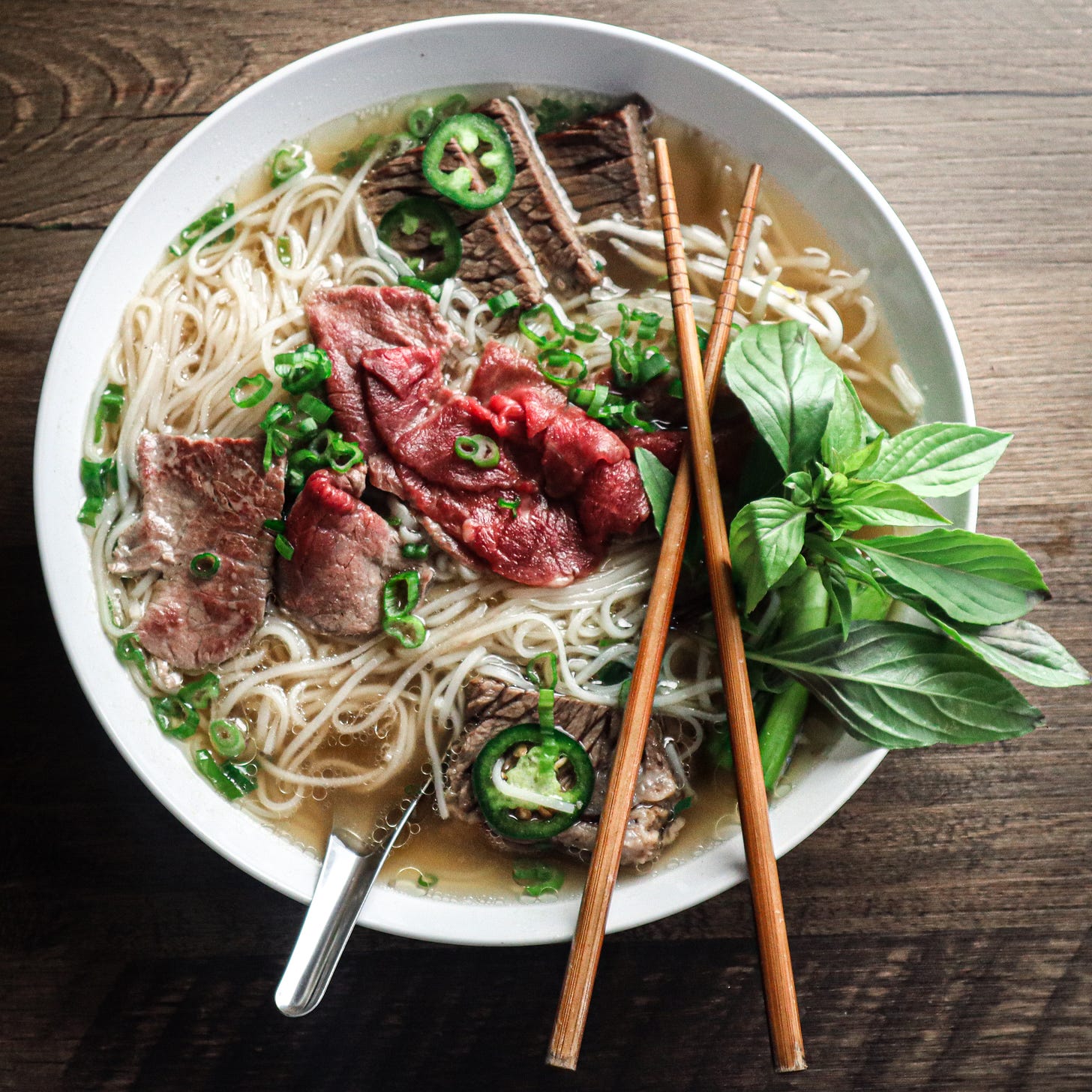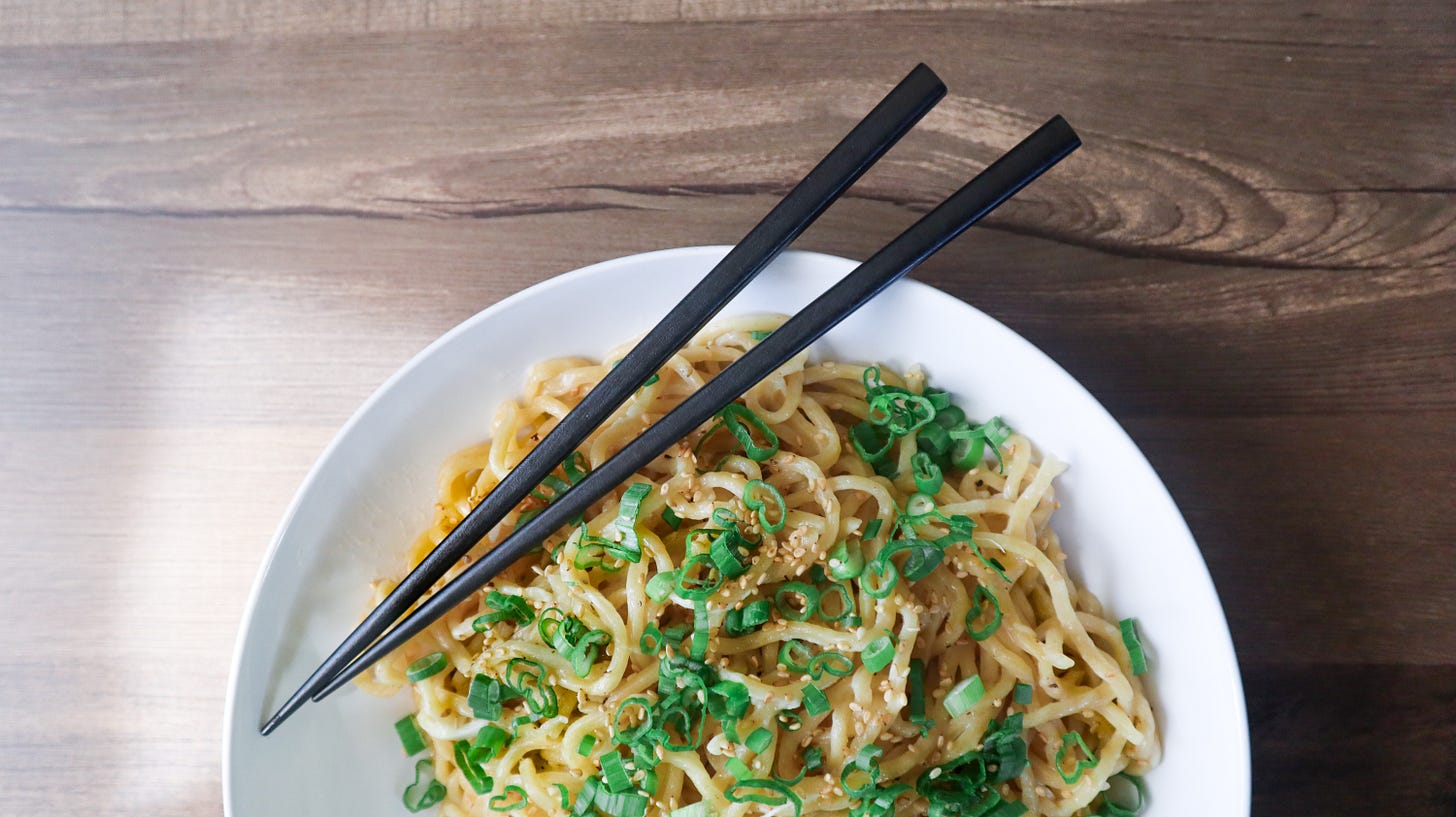Introduction: A Tapestry of Flavor and Culture
The evolution of Vietnamese cuisine in the United States is a compelling narrative of cultural integration and culinary transformation. As a chef, I have closely observed and engaged in this journey, witnessing how traditional Vietnamese dishes have gracefully adapted to the palates and ingredients of America.
This piece seeks to delve into the nuances of this unique culinary fusion, emphasizing the significant role of influential chefs and the incorporation of U.S. products, particularly beef, in redefining Vietnamese cooking in the American context.
Tracing its roots from the vibrant streets of Hue, Ha Noi, and Ho Chi Minh, to name a few, to the diverse culinary landscape of the United States, Vietnamese cuisine has undergone a significant metamorphosis.
This transformation reflects the cuisine's ability to maintain its authentic essence while embracing the new and unfamiliar. It's a testament not only to the flexibility and depth of Vietnamese culinary traditions but also to the innovative spirit of the Vietnamese people who brought their rich culinary heritage to American soil.
In this exploration, I (attempt) to highlight how Vietnamese cuisine has been reinterpreted in America, particularly by integrating U.S. ingredients. The use of American beef, for instance, has introduced a new
dimension to classic Vietnamese dishes, blending the distinct flavors of Vietnam with the quality and characteristics of American produce. This fusion has led to an intriguing blend of tastes and textures,
contributing significantly to the evolving identity of Vietnamese cuisine in the United States.
Moreover, the influence of pioneering chefs in shaping the narrative of Vietnamese cuisine in the United States is undeniable. Culinary figures such as Khai Duong, Charles Phan, and Helene An have been instrumental in broadening the appeal of Vietnamese cuisine. They have skillfully combined traditional
Vietnamese cooking techniques with high-quality, locally sourced American ingredients, redefining and giving them a fresh perspective for a new audience. Their efforts have transformed Vietnamese cuisine from a niche ethnic food to a prominent and celebrated component of the American gastronomic landscape.
This piece is an ode to the journey of Vietnamese cuisine in the United States– a story of innovation, adaptation, and cultural harmony. It celebrates the fusion of diverse culinary practices and the unifying
power of food in bridging different cultures, creating new traditions, and fostering a shared appreciation for cuisine transcending geographical boundaries.
The rise of Vietnamese cuisine in the United States is deeply intertwined with the migration of Vietnamese immigrants following the Vietnam War's conclusion in 1975. This pivotal wave of migration marked the start of a new chapter in America's culinary landscape, introducing a rich tapestry of flavors from Vietnam.
For these early Vietnamese settlers, food became a powerful connection to home. Seeking familiarity in an unfamiliar land, they laid the foundation for Vietnamese culinary heritage in America. Small family-run eateries and neighborhood restaurants emerged—not just as places to eat, but as cultural enclaves. These spaces provided comfort and community, offering immigrants a taste of home while inviting curious American diners to experience the vibrant, nuanced flavors of a far-off land.
The legacy of these early establishments continues today, shaping the ever-evolving story of Vietnamese cuisine in America.
Diasporic Vietnamese Cuisine: The American Influence and Evolution
The first Vietnamese restaurants in the United States sought to provide comfort through the familiar tastes of home. Each meal reflected the diverse culinary traditions of Vietnam—from the bold, street food flavors of Ho Chi Minh City to the delicate, nuanced dishes of Hanoi. Iconic dishes such as Phở, a fragrant beef noodle soup; Bánh Mì, a sandwich fusing French and Vietnamese influences; and Gỏi Cuốn, fresh spring rolls filled with herbs and shrimp, quickly captivated the American palate. These dishes offered more than sustenance—they became a bridge between cultures, comforting the Vietnamese community while introducing Americans to a new, vibrant cuisine.
The process of introducing Vietnamese cuisine to the United States was gradual. Immigrant chefs and restaurateurs often had to adapt their recipes to the availability of local ingredients and the evolving tastes of American diners. This adaptation resulted in a gentle fusion—one that respected traditional Vietnamese flavors while making subtle adjustments to suit local palates.
Beyond serving food, these early Vietnamese restaurants played a crucial role in preserving the culinary heritage of Vietnam during a time of significant change and upheaval. They became cultural stewards, ensuring that the recipes, techniques, and traditions passed down through generations continued to thrive in a new homeland.
This foundational period laid the groundwork for the expansion of Vietnamese cuisine across America. It paved the way for future generations of Vietnamese-American chefs to innovate, reimagine, and further popularize the rich, complex flavors of Vietnam. What began as small family eateries has grown into a deeply rooted culinary presence that continues to shape and enrich the American food landscape.
The Americanization of Vietnamese Cooking: Crossing Cultures
The evolution of Vietnamese cuisine in the United States exemplifies how proximity to other cultures can influence and transform culinary practices, leading to the creation of new dishes. As Vietnamese immigrants settled in America, they found themselves surrounded by a diverse culinary landscape that provided both challenges and opportunities for innovation. This dynamic interaction fostered the development of unique Vietnamese-American fusion dishes that are now celebrated in both communities.
The Vietnamese community's exposure to American ingredients and cooking styles led to experimentation and adaptation. Immigrant chefs blended their traditional recipes with local influences, driven by two core intentions: to nourish themselves and to serve a diverse clientele. One notable example of this fusion is Crustacean's Garlic Seafood and Garlic Noodles, created in the mid-1970s to bridge cultural gaps and cater to a predominantly Italian-American audience. This dish laid the foundation for what is now recognized as Asian Fusion cuisine.
Another remarkable fusion is Viet-Cajun cuisine, which emerged from Vietnamese immigrant communities in the Gulf South, particularly in Houston, Texas. After the Vietnam War, many Vietnamese refugees—skilled fishermen by trade—settled along the Gulf Coast, where they found familiar fishing opportunities. This new environment prompted them to blend traditional Vietnamese flavors with the local Cajun and Creole culinary traditions, resulting in a distinct and celebrated cuisine.
Viet-Cajun Cuisine: A Symbol of Cultural Adaptation
Viet-Cajun cuisine epitomizes the harmonious blending of Vietnamese and Cajun culinary practices. The Viet-Cajun crawfish boil is perhaps its most iconic dish, combining traditional Cajun boiling methods with Vietnamese ingredients such as lemongrass, garlic, and ginger. This fusion created a unique culinary experience that not only highlighted cultural adaptation but also symbolized the resilience and ingenuity of Vietnamese immigrant communities.
The development of Viet-Cajun cuisine showcases how immigrant communities adapt their culinary traditions to new environments while maintaining their cultural identity. The Gulf South's seafood-rich landscape provided a natural setting for Vietnamese fishermen to continue their trade, adapting their recipes to incorporate local staples like crawfish.
The Adaptation of Traditional Dishes
The evolution of Vietnamese cuisine in America has been significantly influenced by ingredient accessibility. Traditional dishes like Phở and Bún Bò Huế, which typically rely on specific cuts of beef such as bắp bò (beef heel muscle) and brisket, faced adaptation due to the limited availability of these cuts in the U.S. market. Vietnamese cooks in diaspora began utilizing more accessible American cuts like tri-tip, filet mignon, ribeye, and sirloin. Although these cuts are not typical in Vietnamese cuisine, they introduced new depths of flavor to these classic dishes.
For example, filet mignon adds tenderness to Phở, while the robust flavor of tri-tip enhances the broth of Bún Bò Huế. Similarly, dishes like Bò Lúc Lắc (shaking beef) have been enriched by the use of sirloin. These adaptations reflect the innovative spirit of Vietnamese cooks who have embraced local ingredients while preserving traditional cooking techniques.
The Role of Cultural Ambassadors in Promoting Vietnamese Cuisine
The global promotion of Vietnamese cuisine owes much to influential figures like Anthony Bourdain, whose passionate exploration of Vietnam's food culture brought it into the international spotlight. His authentic and enthusiastic portrayal of Vietnamese dishes on television made the cuisine more accessible and appealing to a global audience, sparking curiosity and appreciation.
The Michelin Guide's expansion to Vietnam further elevated the country's culinary status, recognizing its excellence on a prestigious platform. This recognition has drawn global food enthusiasts to explore the diverse flavors of Vietnamese cuisine, contributing to its growing popularity.
Prominent Vietnamese chefs have also played a vital role in promoting and evolving Vietnamese cuisine on the international stage. Chefs such as Luke Nguyen from Australia, Khai Duong from San Francisco, Viet Pham from Utah, and Peter Cuong Franklin from Ho Chi Minh City have introduced innovative interpretations of Vietnamese dishes through their restaurants and media appearances. These chefs act as cultural ambassadors, blending traditional recipes with contemporary techniques and global influences, helping to demystify Vietnamese cuisine for a broader audience.
Challenges and Opportunities for Future Growth
Despite its growing popularity, Vietnamese cuisine in the United States faces the challenge of balancing authenticity with adaptation to local tastes. Preserving traditional flavors while accommodating new preferences requires a delicate equilibrium. The dynamic American culinary market, with its diverse array of international cuisines, presents both challenges and opportunities for Vietnamese cuisine to stand out through innovation.
As former President Barack Obama once said, "When times change, so must we." This sentiment resonates deeply in the culinary world, where traditions are constantly evolving in response to changing environments. The evolution of Vietnamese cuisine in America reflects this ongoing dialogue between tradition and innovation.
As Vietnamese cuisine integrates further into the American culinary tapestry, it undergoes a natural transformation. Ingredients that were once unfamiliar or unavailable become integral parts of new recipes. Cooking methods evolve to adapt to new technologies and kitchen environments. Additionally, interaction with other culinary traditions leads to a cross-pollination of ideas and flavors, enriching the cuisine's diversity.
Embracing the Future While Honoring the Past
The journey of Vietnamese cuisine in America is a story of cultural adaptation, resilience, and innovation. It is a narrative that reflects the broader experience of a community finding its place in a new country while contributing significantly to its cultural and culinary landscape.
The integration of U.S. ingredients, particularly beef cuts, into Vietnamese cooking has been a key aspect of this journey. This blend of tradition and local influences has expanded the culinary repertoire of Vietnamese cuisine, enriching the American dining scene with new flavors and experiences.
Looking ahead, Vietnamese cuisine in the United States promises further evolution. With the continued influence of cultural ambassadors, global recognition from institutions like the Michelin Guide, and a growing appreciation for its rich flavors, Vietnamese cuisine will remain at the forefront of culinary trends. Its journey highlights the power of food as a medium for cultural connection and expression, celebrating both heritage and innovation.
As Vietnamese cuisine continues to evolve within the American context, it offers not only a taste of its rich past but also a window into the dynamic process of cultural fusion. This ongoing evolution underscores the vibrant and ever-changing landscape of the culinary world, where tradition and innovation intersect to create something both familiar and refreshingly new.









